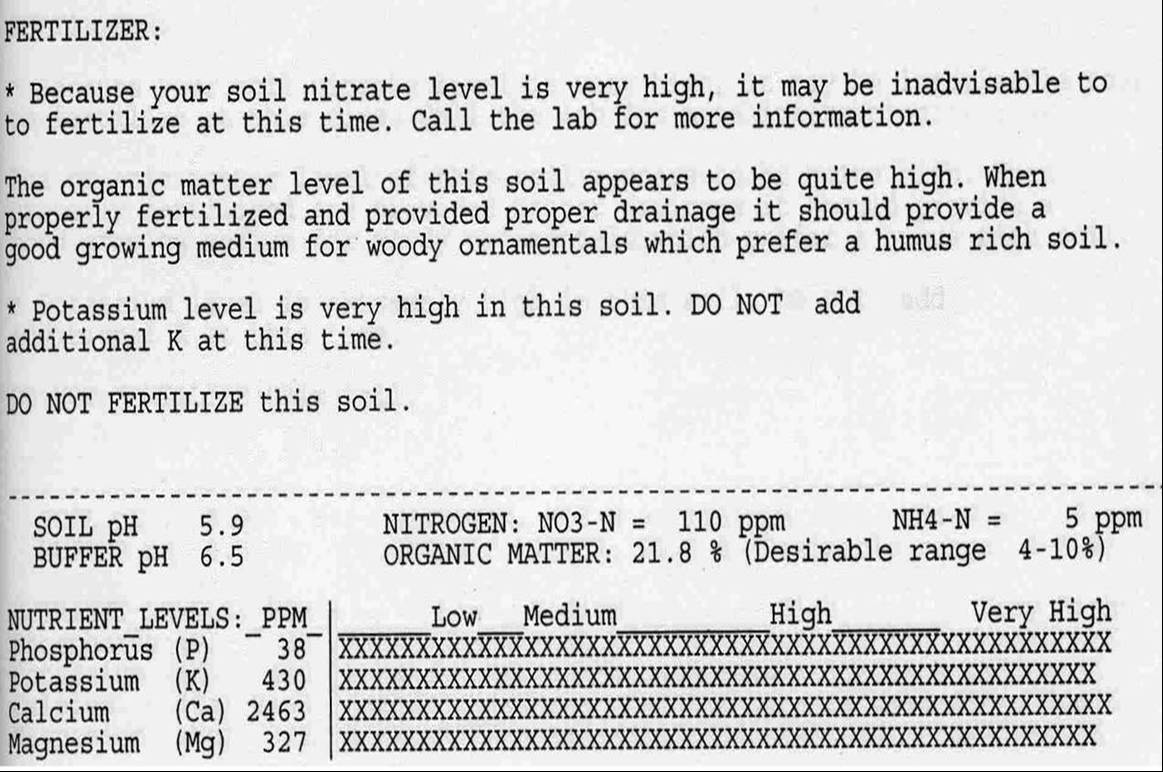Urban environments are always challenging for landscape plants just because they are anything but “natural.” Temperatures are higher, water is often less available, and compacted soils have all the nourishing qualities of concrete. The single most important thing you can do to ensure long-term success of landscape trees and shrubs is to get their roots well established in the soil.
I’m going to leave the topic of soil amendments to another day (but you can find my myth columns about them at http://www.theinformedgardener.com under “Horticultural Myths”). What I want to focus on is our propensity for fertilizing landscape trees and shrubs without really knowing why, or when, or if we should be adding any particular plant nutrient.
The smartest $13 you can spend is to have a soil analysis done before you add anything to your soil. My favorite soil testing lab is the University of Massachusetts at Amherst. That $13 will buy you a complete standard analysis of the available nutrients in the soil, plus a measurement of the soil’s organic matter content. Of course, there are many other soil testing labs you can use, but UM’s Amherst lab is only providing you with information – not a sales pitch for amendments and fertilizers.
Why is this so important? Let’s say you go to a nutritional supplement store, buy every possible supplement, and take them all. Do you need all of these? Probably not. It would be smarter to talk to your doctor and find out what you’re missing, right? It’s the same with your soils. Don’t assume your soil needs a lot of phosphorus, even though transplant fertilizers are loaded with this element. Non-agricultural soils often contain abundant levels of this nutrient, and too much phosphorus will hurt mycorrhizae and contribute to water pollution. Take a look at this portion of a soil test for an organic demonstration garden:
 Figure 1. Note the high level of organic material in this soil, which contributes to the nutrient overload.
Figure 1. Note the high level of organic material in this soil, which contributes to the nutrient overload.
The trick to fertilizing landscape soils is understanding that landscape soils are not agricultural soils. You’re not harvesting crops (an activity that depletes the soil of its plant nutrients). Urban landscape soils usually have high enough levels of most nutrients to sustain plant growth. But you’ll never know unless you have your soils tested.